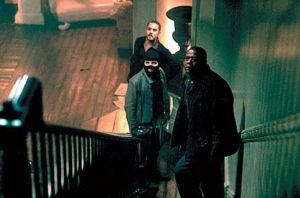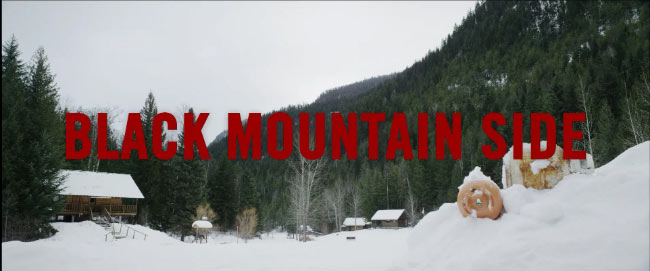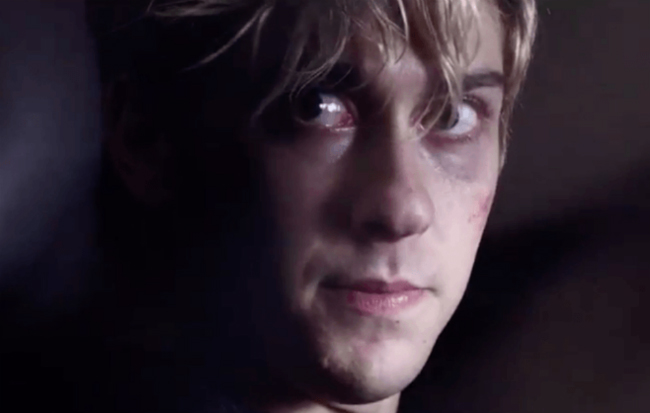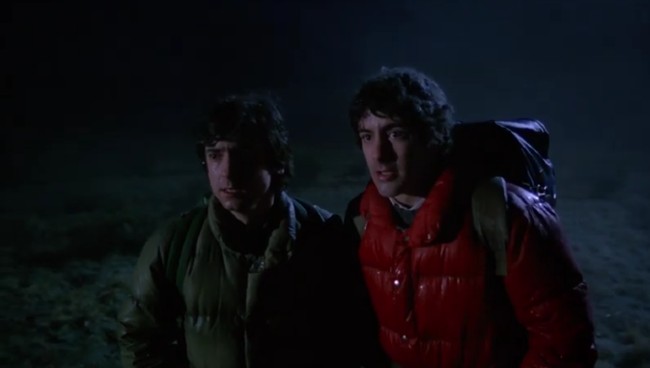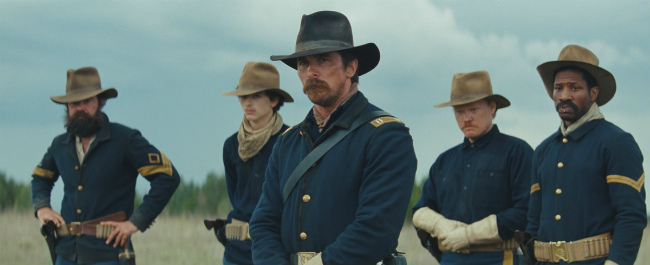The Directors: The Films of David Fincher Part 1
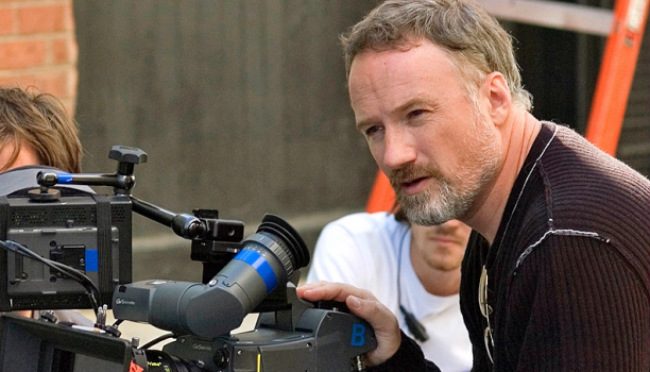
David Fincher’s Mindhuner is ready to stream on October 13th. There’s no better time to look at the movies that brought him to this point.
David Fincher started his career working for Industrial Lights and Magic (ILM). He went on to direct music videos. Thankfully for us he made the jump into feature films with Alien 3. Since Alien 3‘s 1992 release Fincher has gone onto to cement his name as a modern day auteur. Fincher made the dive into television with the highly rated Netflix original House of Cards.
Netflix is also releasing Fincher’s next television series, Mindhunter. Mindhunter is based on the non-fiction book Mindhunter: Inside the FBI’s Elite Serial Crime Unit by Mark Olshaker and John Douglas. It’s about serial killers and the agents tasked with getting inside their heads. Serial killers, dark thoughts, and agents chasing killers are all in Fincher’s wheelhouse. We’ll have to wait until October 13th to see if the series lives up to the bar already set high by Fincher’s other projects. We have to wait for Mindhunter, but we can rank all of Fincher’s movies right now.
Gone Girl (2014)
Fincher’s most recent film, Gone Girl, is also his weakest film to date. The movie revolves around Amy Dunne’s (Rosamund Pike) plot to frame her husband, Nick Dunne (Ben Affleck), for a murder he didn’t commit. The premise sounds interesting. Unfortunately, the story never gets interesting.
Most women who become disillusioned about their marriage get a divorce. Some, unfortunately,swallow their pride and live a life unfulfilled. Some women have even turned to murder. There’s a number of truTV, Discovery ID, and Oxygen series on women who kill. The women in those series were caught and Amy Dunne should have been caught before the opening credits were over.
The entire premise relies on two things. First, Nick has to immediately call the police because he thinks his wife is missing or worse. If for any reason he waits until the next day (Remember, later in the movie he tells his sister he and Amy had a fight and left the house) to call the police Amy’s elaborate time line is blown. Second, the right police detective has to be assigned Nick’s call. It would be non-starter if Detective Rhonda Boney ( Fear the Walking Dead‘s Kim Dickens) didn’t see a crime scene the moment she walked into the Dunne’s house. It’s these two small details that lead Boney to find the smallest speck of a blood above the stove in the Dunne’s kitchen. The small speck of blood is all Boney needs to call the house a crime scene. How she got from a broken table to a dress that hadn’t been ironed to a crime scene is only one of many leaps in logic the movie contains.
However, having a dogged police detective being assigned to the case is also one of the biggest mistakes in the movie. Boney, being set up as a super observant cop, could also have picked apart Amy’s elaborate ploy. It’s a biological fact that blood clots outside the body. Putting it in a refrigerator won’t help preserve blood. The only thing that will keep blood from clotting is an anticoagulant. Anticoagulants would have been detected in the blood. Credit card statements have dates of purchase. Unless Amy’s purchases were stretched over long period of time it should have at least raised some flags to super cop Boney that something wasn’t quite right. Later in Gone Girl, Boney yells to Nick fire won’t destroy blood. Fire can destroy blood, it’s DNA fire has a hard time destroying.
The other flaw in the movie is the Amy Dunne character. Dunne is clearly 100% completely psychotic. The movie initially tries to set up Amy as a sympathetic character. She tells us she’s a battered woman who is so afraid of her husband she needs to by a gun for protection. Who wouldn’t we be sympathetic to the character? Even after we learn the depths she has gone to get revenge on the men she has perceived as wronging her the movie still strives to make her sympathetic. The theme of the movie is basically that it’s okay to frame men for rape and murder. A strong woman would find a way to do get revenge. Gone Girl is the worst kind of feminist movie.
The final sins occur in Gone Girl’s ending. We have to get through a scene of Amy being interviewed by a group of unnamed police detectives about how she was “kidnapped” and “escaped” from Desi Collings (Neil Patrick Harris). She controls the interview. Boney is the only officer who tries to question her story. However, the unnamed police officers shut her up at every question asked. The same detective who wouldn’t take no for an answer and connected a dress left on an ironing board to murder is silent. Boney’s silence and the lack of an investigation into Collings’s death is the only way the ending works.
Finally, Nick decides to stay with Amy at the end of the movie. There is absolutely zero reason why he would or should stay. The reasons are, like the rest of the movie, weak. Amy says she owes him. Owes him for what? Amy says Nick destroyed her life, but other than moving to Nick’s home town we’re never told or shown how he destroyed her life. He stays because she’s pregnant. The movie leaves some doubt that she may be pregnant, but even if she is pregnant it wouldn’t be a strong enough reason to stay with a woman who was trying to frame you for murder in a state with a death penalty (Side note: Not every state with the death penalty will automatically give a person convicted of murder the death penalty). On average, fifty percent of marriages in the United States ends in divorce. People get divorced every single day. It’s sad, but some of those divorces involve pregnant women.
Stylistically, Gone Girl is a Fincher film. The lighting, use of shadows, and the flip between Nick’s side of the story and Amy’s side of the story is very Fincher. Gone Girl also reminded us that Ben Affleck can act and Tyler Perry can do more than countless Madea movies. It’s not Fincher’s fault the movie ultimately fails. The fault of the movie is the story itself. It was doomed to fail the moment it started.
Panic Room (2002)
Panic Room could have been like every other home invasion movie in a long, long line of home invasion movies. It has all the trappings of your run-of-the-mill home invasion movie. It has a family- Meg Altman (Jodie Foster), a newly divorced mother, and her daughter, Sarah (a pre-Twilight Kristen Stewart), move into a swank New York home thinking their new lives can start.
Hidden in a bedroom, where only the the keen eyed Meg can tell is smaller than other bedrooms, is a panic room. It may be a New York City thing, but having all the bedrooms in a house the same size makes no real estate sense. However, it gives Fincher the opportunity to establish Meg as an observant person.
It’s also an excuse for the realtor to give Meg and the audience a tour of all the panic room’s special features. The room features an outside phone line, separate ventilation system, a really thick door, monitors, and an intercom. If you didn’t think the panic room would be central to the movie then you weren’t paying attention to the title of the movie.
What’s a home invasion movie without home invaders a reason for the home to be invaded? Junior (Jared Leto, Fight Club ) convinces a broke Burnham (Forest Whitaker) and a somewhat mentally unhinged Raoul (an excellent performance by Dwight Yoakam) to break into the house and retrieve 3 million dollars from a safe located in…the panic room.
Yes, Panic Room has all the trappings of other home invasion movies with one exception, David Fincher. Fincher sets Panic Room apart from other home invasion movies from the moment opening credits start. For many of us who do not live in New Your City we associate the city with hustle and bustle. It’s a city where people are walking on top of each other. The opening sequence flips that notion on its head and shows a sprawling city, a vast city with wide open spaces. It’s the perfect contrast to the cramped claustrophobic confines of the panic room Fincher sets up later in the movie.
Whereas most home invasion movies concern themselves with kills and a body count, Fincher’s home invasion concerns itself more with psychological drama. Panic Room has more in common with a Hitchcock film than You’re Next or The Strangers. Before the movie is over you’ll be questioning which room is the actual panic room. Is it the room the trio of home invaders find themselves in with both time and options running out or is it the room Meg and Sarah have locked themselves in waiting for help to arrive?
Alien 3 (1992)
Alien 3 was, and even with the release of Prometheus may still be, universally hated by fans of the Alien franchise. Fans were outraged over the deaths of Newt, Bishop, and Hicks. Adding salt on the wound was Ripley’s triple lindy dive into molten steel at the end of the movie. Fans simply did not like the direction of the movie. But does this make Alien 3 a bad movie?
In Alien 3 we can see Fincher’s style developing into what we see today. The long shot of Murphy looking down the hole the alien made in the ventilation tunnels and the spinning fan blade dissecting light is very reminiscent of what we would see in movies like Seven. Alien 3‘s odd camera angles and close ups would be revisited time and time again.
The other problem fans had with the movie was the lack of the rifles, guns, and explosions. Aliens is a great movie, a classic, however it dispensed with a lot of the horror elements of Ridley Scott’s original. Alien 3 was a return to the horror roots of the original. The movie relies more on the horror elements of “what’s around the next corner” and people disappearing than machine gun fire down hallways. Fans though wanted more Aliens in the sequel than horror.
Alien 3 is one of Fincher’s more dark movies not only in tone but in its theme. The themes of religion and death often intersect and that intersection is very apparent in Alien 3. The prayer Dillon (Charles S. Dutton) says over the bodies of Newt and Hicks is also a baptism for the birth of the “dog” alien; the alien is death for Ripley and company. The planet Ripley crashes on looks apocalyptic. Even the name Fiorina “Fury” 161 sounds like a hellish place to be stranded. Even Ripley’s death conjures up religious images. Spread armed and legs together, Ripley’s death invokes images of Jesus dying on the cross.
The problem with Alien 3 isn’t completely Fincher’s fault. There were four scripts written for the movie and twice as many rewrites. At one point, Sigourney Weaver’s Ellen Ripley wasn’t slated to be in the movie. The production was plagued with problem and studio interference. The interference from studio executives has become legendary. Alien 3 also met resistance from “test audiences.” The studio caved and made changes to the movies. Fortunately for us some of the footage was restored for the Alien Quadrilogy box set.

We’re not done yet. There’s more Fincher films to review. Check out Parts two and three of our Fincher review.





